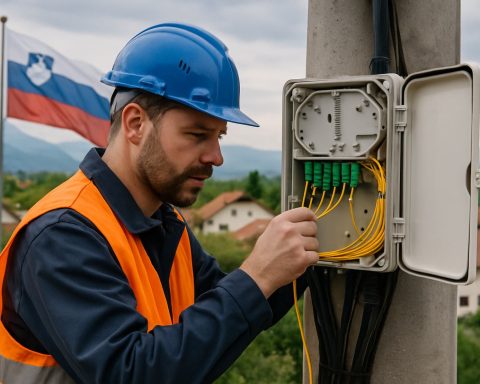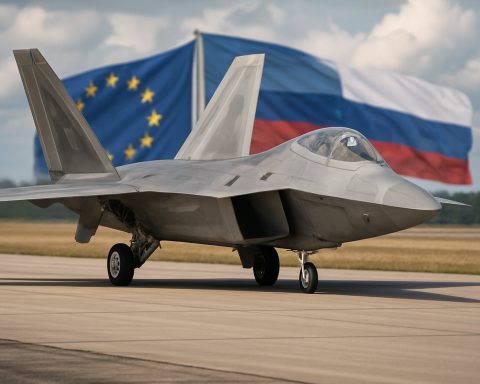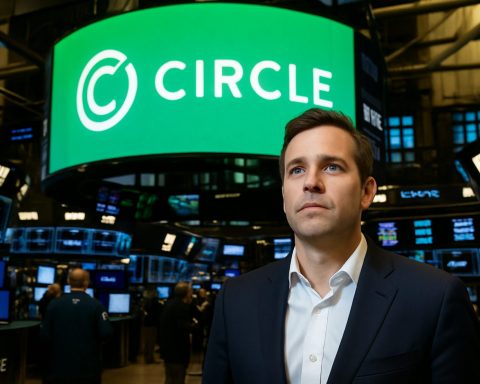- CoreWeave raised $1.5 billion in its recent trading debut, marking the largest AI-related IPO recently despite falling short of its $3 billion goal.
- The company originated from a New Jersey garage and was founded by Brian Venturo, Michael Intrator, and Brannin McBee, initially as an Ethereum mining venture.
- CoreWeave was once the world’s largest Ethereum miner with 50,000 Nvidia GPUs.
- The company strategically pivoted to AI infrastructure, leveraging partnerships with communities like EleutherAI to expand their expertise and client base.
- Currently, CoreWeave operates 32 data centers with 250,000 GPUs, including Nvidia’s latest Blackwell chips.
- Despite a $7.6 billion debt, their strategic deals aim to balance GPU acquisition costs.
- CoreWeave’s journey exemplifies resilience and innovation, demonstrating non-linear paths to success in the tech industry.
In the world of tech, it’s not every day that a company rises like a phoenix from the ashes of another industry’s decline, yet CoreWeave has done just that. This unlikely powerhouse in AI infrastructure kicked off trading last Friday, raising a staggering $1.5 billion. While this figure fell short of their ambitious $3 billion target, it still forged the path for the largest AI-related IPO in recent history, underscoring a fascinating tale of resilience and transformation.
CoreWeave’s inception story begins not in sleek Silicon Valley offices, but in the modest confines of a New Jersey garage. Co-founders Brian Venturo, Michael Intrator, and Brannin McBee found themselves at a crossroads when their energy-focused hedge fund, Hudson Ridge, shuttered during the U.S. fracking boom. With time on their hands and a twinkle of ambition, they delved into the crypto mining craze, starting modestly with GPUs sprawled across a pool table in their Manhattan office.
This modest beginning spiraled into something massive. From a single GPU, they amassed an army of 50,000 Nvidia consumer GPUs, establishing themselves as the world’s largest Ethereum miners for over two years. Venturo recalls the logistical miracle of operating these chips, intended for gaming, under the harshest conditions—a testament to their ingenuity and relentless drive.
But there was a bigger dream simmering in the background: Artificial Intelligence. Seizing the day, CoreWeave joined forces with the EleutherAI community, trading their GPU might for AI training knowledge. This partnership proved to be a fortuitous leap, positioning CoreWeave at the center of a burgeoning network of AI startups. This exposure, combined with their open-source collaborations, laid the groundwork for an unexpected boom in AI-focused clients, including tech giants like OpenAI and Microsoft.
Fast forward to today, CoreWeave stands tall with 32 data centers and 250,000 GPUs, including Nvidia’s cutting-edge Blackwell chips, enabling complex AI reasoning and scaling new heights of innovation. Despite facing a daunting $7.6 billion in debt, Venturo reassures skeptics with strategic foresight—each customer deal is designed to offset the costs of GPU acquisition, testifying to their business acumen.
The incredible journey of CoreWeave isn’t just a story of technological evolution; it’s a tribute to the sheer will and serendipity that has catapulted three former hedge fund operators into the forefront of AI infrastructure. It’s a reminder that in the tech industry, paths to success are rarely linear, as innovation often springs from the most unexpected places.
Rising from the Ashes: How CoreWeave Became an AI Infrastructure Titan
In the tech world, CoreWeave’s meteoric rise underscores a compelling narrative of resilience, innovation, and strategic foresight. Emerging from the ashes of the U.S. fracking industry’s decline, CoreWeave has rapidly transformed into a leading powerhouse in AI infrastructure, attracting attention with its recent IPO and astronomical growth. Here’s a deeper dive into this fascinating journey, along with key industry insights, trends, and actionable tips for businesses in the AI realm.
How CoreWeave Became a Major Player in AI Infrastructure
Strategic Partnerships and Evolution
– CoreWeave’s origin as a top Ethereum miner utilizing 50,000 Nvidia consumer GPUs marked its natural progression into the AI sector. Their subsequent collaboration with the EleutherAI community was pivotal; by supplying GPU power in exchange for AI training knowledge, they expanded into the burgeoning network of AI startups.
– Engaging with open-source communities not only fortified CoreWeave’s position but also opened doors to major clients like OpenAI and Microsoft.
Expansion and Infrastructure
– From its humble beginnings, CoreWeave now boasts 32 sophisticated data centers equipped with 250,000 GPUs, including the latest Nvidia Blackwell chips. This extensive infrastructure supports complex AI reasoning and innovation, positioning CoreWeave as a formidable competitor in the AI infrastructure landscape.
Real-World Use Cases and Industry Trends
AI and Cloud Computing
– CoreWeave’s infrastructure and offerings underscore the growing trend of decentralized cloud computing specifically tailored for AI workloads. This specialization gives clients access to tailored resources, driving efficiencies in AI training and deployment.
Market Forecasts
– According to industry analysts, the AI infrastructure market is expected to grow significantly, driven by increasing demand for AI solutions in sectors such as healthcare, finance, and autonomous driving. CoreWeave’s strategic positioning and competitive offerings make it well-placed to capture a significant share of this market.
Challenges and Strategic Considerations
Financial Hurdles and Debt Management
– CoreWeave faces a daunting $7.6 billion debt. However, strategic partnerships and customer deals structured to offset GPU acquisition costs demonstrate sound business acumen. Companies entering or expanding within this sector can learn from CoreWeave’s approach to managing high infrastructure costs while ensuring sustainable growth.
Scalability and Innovation
– As AI models become increasingly complex, the demand for powerful computing resources will continue to grow. CoreWeave’s investment in cutting-edge technology and scalable infrastructure provides a template for businesses aiming to support high-performance AI applications.
Tips for Businesses and Entrepreneurs
1. Embrace Open-Source Collaboration: Engage with open-source communities to gain exposure, innovate, and forge valuable partnerships, mimicking CoreWeave’s successful strategy.
2. Strategize Debt Management: Learn from CoreWeave’s approach to structuring customer deals that mitigate risk and support growth.
3. Invest in Cutting-Edge Technology: Stay ahead of the curve by investing in the latest technology and infrastructure to handle increasingly complex AI workloads.
4. Focus on Niche Markets: Specializing in specific AI technologies or applications can differentiate your business and cater to emerging market needs.
For more insights into emerging technologies and strategies for business success, explore the resources at CoreWeave.
Conclusion
CoreWeave’s journey is a testament to the power of resilience, strategic partnerships, and forward-thinking innovation. In an industry characterized by rapid change and competition, CoreWeave stands as a model of how businesses can rise from unexpected origins to become leaders in the global AI infrastructure landscape. By adopting similar strategies and maintaining a proactive approach to market changes, other companies can navigate the complexities of the tech world effectively.







